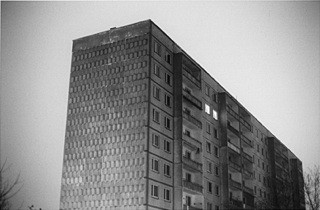TOBIAS ZIELONY

Tobias Zielony (born 1973) is a German photographer and filmmaker who bases his work in Berlin. His projects focus on marginalized communities and subcultures in young people in lesser known places, uncovering the activities teenagers get up in their spare time. Whilst studying documentary photography at the University of Wales, Newport, he became drawn to ‘anti-social’ youth culture in Britain, in particular the lives of those living on council estates, and produced his first few projects, including ‘Car Park’ (2000), a set of images taken in shady Bristol carparks that captured British youth in desolate, urban areas, and ‘Curfew’ (2001) a project exploring the lives of young Liverpudlians, showcasing the destructive boredom stemming from a youth spent in one of England’s poorest urban areas. Throughout both projects we are confronted with the effects of poverty that reflects on the teenagers hedonistic behaviours, yet captured in a way that seems almost liberating.







Zielony’s first two projects explore the same themes but are captured in two different ways – The images in Curfew are taken primarily during bleak, bright days, in open endless spaces such as fields and parks, with a dull colour scheme and often of idle, isolated subjects, whereas the images in Car Park are captured during the night, often of big groups in small areas using bold, colourful lighting to enhance the images appearance. These images share the similarity of being staged documentary and involve Zielonys subjects looking away from the camera, creating the atmosphere of a candid image. Taken without flash or tripod, the pictures are inspired by the aesthetics of music videos – and therefore by youth culture.. Zielony says he gains his subjects’ trust by not judging or moralising, by taking time and by not trying to ‘save’ anyone, keeping his subjects identities anonymous, which creates images shrouded in mystery.




Zielony continued with the theme of youth culture with his 2004 project ‘Behind the Block’ where he extended his research to four European cities to observe adolescents in public spaces often during night times, again photographing their social environment but also combining architecture into his project to provide backstory and further explore the areas these teenagers hung around in. The use of architecture in this project creates bold, defining images with elements of simplicity through the geometric shape of the buildings – this has inspired me for my simple vs. complex project as i feel it’s a unique touch to the work, and Zielony helps these images compliment each other by using similar lighting and colour to create an aesthetic in his work.




Continuing on in his career of documenting different social environments, he embarked on 3 year project titled ‘Manitoba.’ From 2009-2011, he travelled around Winnipeg, capturing the life of adolescent indigenous gang members in the capital of Manitoba province in Canada. In keeping with the tradition of classic photo journalism, Zielony makes use of various genres of photography; including portraits of gang members posing in front of the camera and views of the urban landscape in and outside Winnipeg. Unlike his past projects, these images are a complete change of culture which results in a set of fresh images that provide a unique perspective on life in Winnipeg.




Later on in his career, Zielony began to experiment more with different lighting and themes in his work – this reflects in his 2013 photobook ‘Jenny, Jenny’ where he photographed sex workers in Berlin. The photo series started with a chance encounter. A conversation with a young couple on a Berlin subway train led Zielony to suggest to photograph them – after discovering the couple were sex workers, Zielony was introduced to their co-workers and began following them around Berlin. The result is the 40 part documentary series “Jenny Jenny”. Zielony combines staged shots with dramatic, vivid colours and abstract architectural images to create an eye catching unique outlook of the lives of sex workers in Berlin. Of all his works i find ‘Jenny Jenny’ to be the most eye catching because of it’s colour scheme and use of vibrant lighting to enhance the image.
IMAGE ANALYSIS

Although this photo is not what i consider to be an aesthetic of photography i’m interested in, i chose to analyze it as i feel its one of Zielonys most eye-catching works. Simply titled ‘Laser’ this image depicts a single subject, stood in what appears to be a field at night. His surroundings are blurry and only dimly lit by the sky, and the subject is stood in the middle with his eyes shut. Bright green laser lights cover his face and body, highlighting his silhouette and making him the sole focus of the image, with a few orbs of light shining into the background of the photo. The stripes on his shirt contrast with the dots of the green and make for a unique photograph. The bold lighting stands out from the dark background and further illuminate the subject. The photo doesn’t appear to be taken with a tripod nor flash, but from a head-on perspective, positioned in front of the subject.